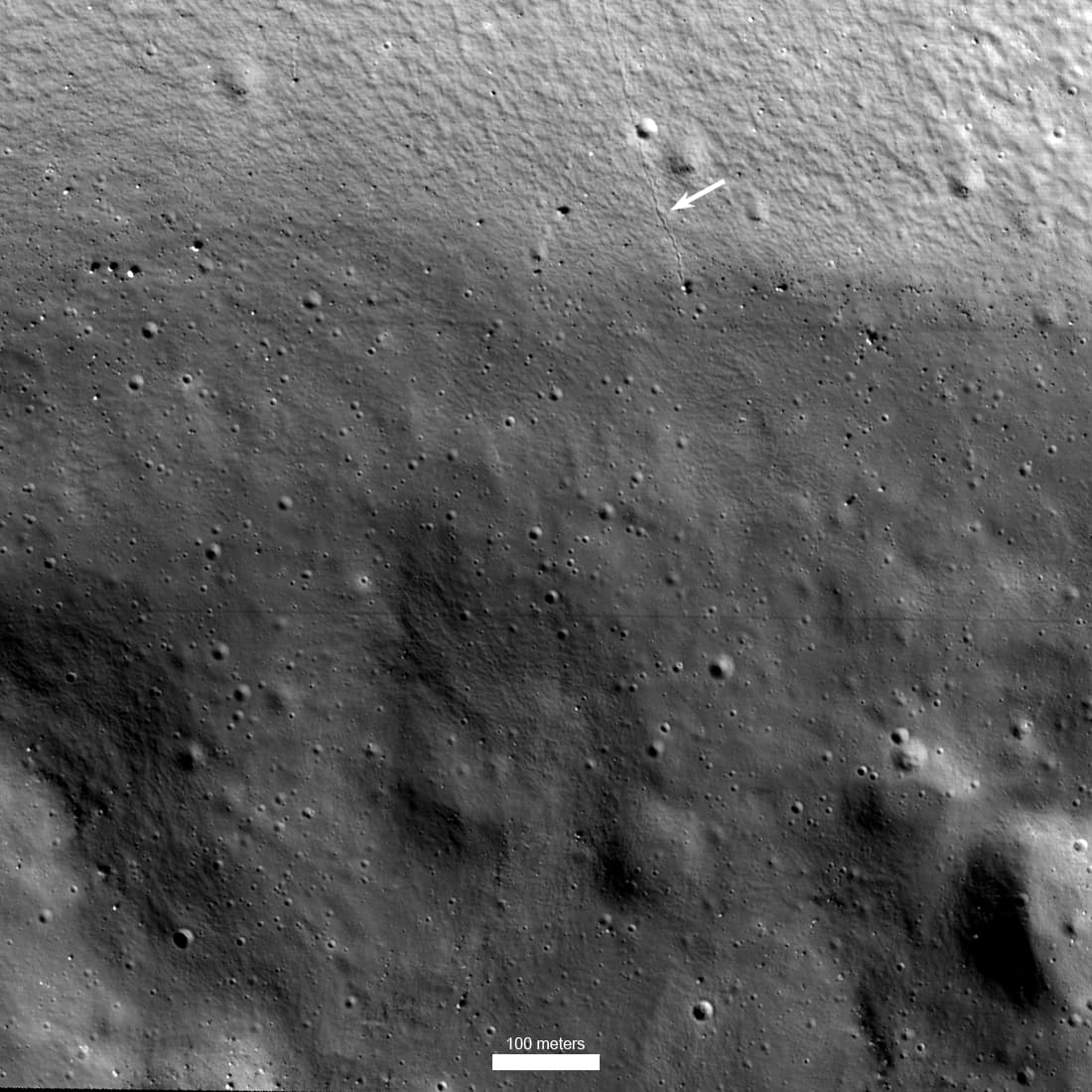In the dark region toward the bottom of this image, the Sun has never shone for a single moment in the last several billion years. This is the floor of Shackleton crater, located almost exactly at the south pole of the Moon, at lunar latitude 89.9° south. The crater is 21 km in diameter and 4.2 km deep and, since the Moon’s orbit is inclined only 5° from the ecliptic and the Moon’s axial tilt is just 1.5° to the ecliptic, the floor of the crater is permanently shadowed from sunlight. There are 324 known permanently shadowed craters on the Moon; Shackleton is one of the largest and well known.
While sunlight never reaches the crater floor, it is illuminated very dimly by light reflected by illuminated peaks around the crater rim, some of which are in near-constant sunlight (80–90% of each lunar orbit). This is sufficient for the very sensitive ShadowCam on board the Korea Pathfinder Lunar Orbiter (KPLO), officially named “Danuri”, now in a 100 km circular polar orbit around the Moon, to image the permanently shadowed regions of the Moon. This high-resolution ShadowCam image (see scale at the bottom) captured the crater wall, some of the near-permanently-illuminated peaks at the top, and the dark, permanently shadowed, crater floor. This image also captured the trail, indicated by the arrow, of a boulder that rolled down into the crater. (Click image to enlarge.)
It is believed that permanently shadowed craters act as “cold traps” where volatiles such as water ice can collect, which may be an important resource for a lunar base that can also exploit the nearby peaks for nearly continuous solar power, avoiding the two week long nights experienced on most of the Moon’s surface. Exploring this region is expected to be a priority for both robotic and crewed missions to the Moon in coming years.
